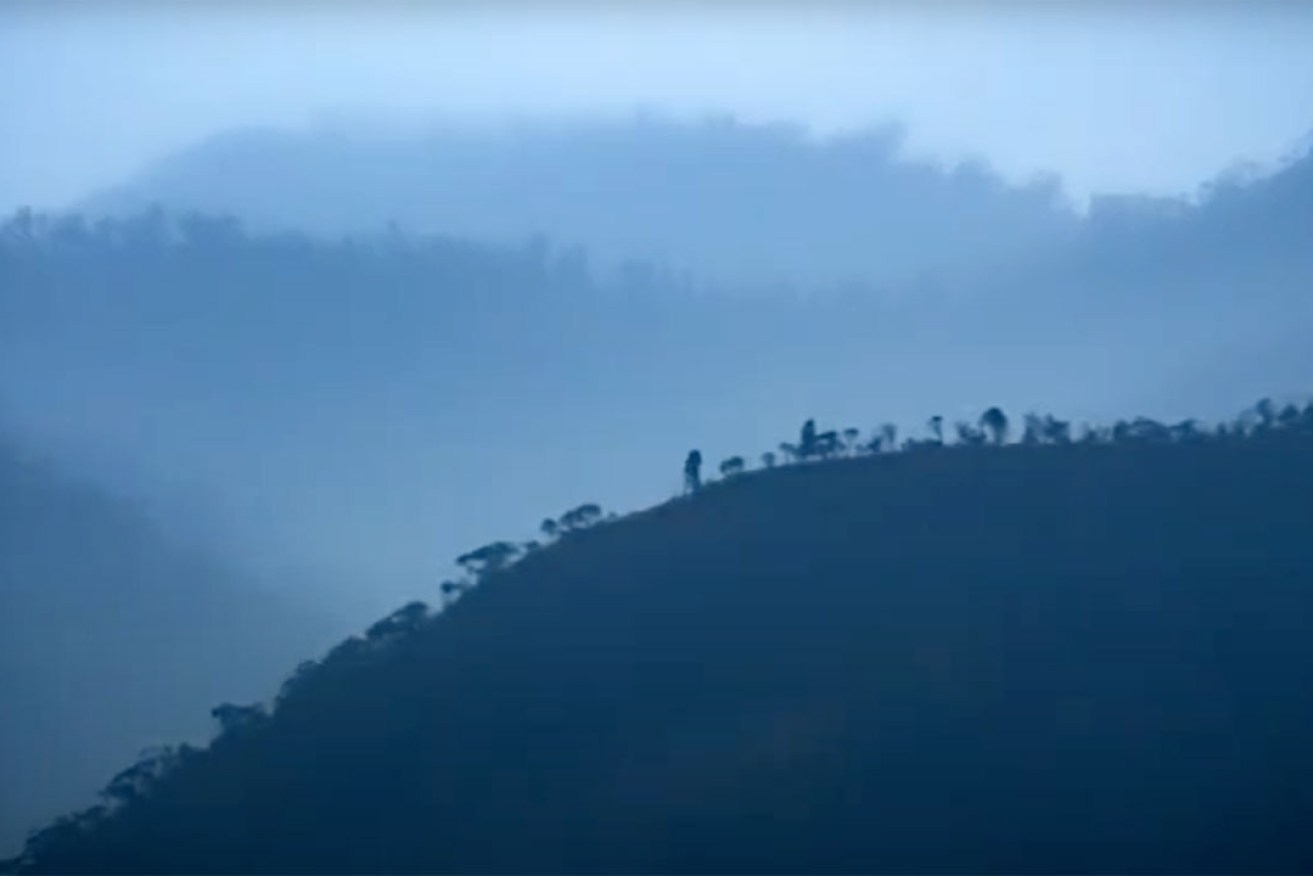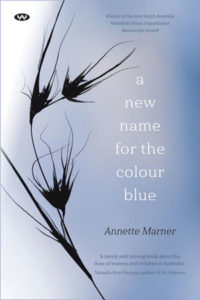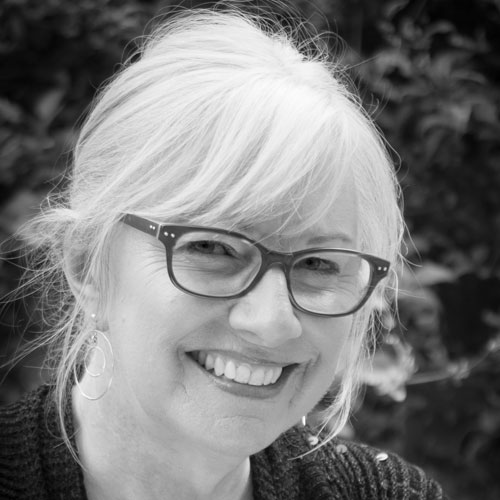Book extract: A New Name for the Colour Blue
With the Southern Flinders Ranges as its backdrop, SA author Annette Marner’s new novel centres on an aspiring artist haunted by two tragic events from her childhood.

Literary mystery A New Name for the Colour Blue, winner of the Adelaide Festival’s Unpublished Manuscript Award in 2018, was launched last month by publisher Wakefield Press, which describes it as “a story of the healing power of remembering, of love, and the breathtaking beauty of the natural world”.
Ten years after the disappearance of her best friend and the death of her mother, narrator Cassandra Noble escapes her country childhood to pursue life as an artist in the city.
On the threshold of a promising career as a painter, her creativity suddenly abandons her. Soon after, she finds herself with a lover who wishes to control her just as her father once did.
Cassandra’s last painting might hold the key to why she can no longer create – but what will happen when she discovers the two tragic events of her childhood are linked in ways she could never have imagined?
The following extract is from Chapter One of A New Name for the Colour Blue.
∗∗∗∗
From the Brompton train, I can see galahs. After the last stop before the city, I put down my newspaper and press my face against the window of the train to look past the names cut into the glass and the white smears of city grime. On the clipped gardens between the groves of eucalyptus and the railway line galahs come to feed, their bodies like pink and grey shells scattered on the grass. I imagine I can hear them, but I know I can’t above the sound of the train. I know they can’t hear me, but sometimes when I remember what I have done I say it anyway, just in case: ‘I’m sorry,’ as if it were a prayer.
Adelaide is a city made of squares. Between the Mount Lofty Ranges and the sea, the streets are set at right angles as if the high church elders had laid down their crosses on the ground. The City of Churches. Planned within an inch of its life. So people would always know where they were going. So people couldn’t get lost.
I walk across Victoria Square where Kaurna people sit in their circles on the grass while the buses and cars roar by us all, and the scent of diesel fills the air. The statue of the smug queen looks into the space above our heads as we pass by on our way to the grey honeycombs of the office blocks. Sometimes I think she has put something in the water to stop us growing wings. A homeless boy sleeps in the shadow of her plinth. This is Adelaide. My city of hope.
 I catch the lift to my office in the community arts department. I say hello to my boss Vivienne, and sit down at my desk next to an Alexander palm in a rectangular pot made of varnished wood. I notice tiny balls of coloured paper lying on top of the bark chips in the pot. Wrappers from caramel lollies. As if someone were careless and dropped them there without thinking. It could have been me. I have a calendar on the wall of the art exhibitions I am organising in the city. None of them are mine.
I catch the lift to my office in the community arts department. I say hello to my boss Vivienne, and sit down at my desk next to an Alexander palm in a rectangular pot made of varnished wood. I notice tiny balls of coloured paper lying on top of the bark chips in the pot. Wrappers from caramel lollies. As if someone were careless and dropped them there without thinking. It could have been me. I have a calendar on the wall of the art exhibitions I am organising in the city. None of them are mine.
I catch the 5.40pm train to Tower Court. I go home to a townhouse in one of the new developments near the city where there is a garden the size of a table with a monstera plant growing in a bed of raised bricks. Where the sun can’t touch you and give you ideas about perspective and colour. Inside my house, there are built-in cupboards made of chipboard. When you open the doors they smell of formaldehyde, as if they’re painted with a kind of enamel that will never dry.
On the back of the bathroom door there is a long mirror. I have tried to take it down, but I’m afraid of breaking it so I leave the exhaust fan off when I’m in the shower to fill the bathroom with steam. Then, I can’t see the body in the mirror. The one that belongs to me. If I can’t see it, I can’t hate it. I can’t accuse it of its crimes against me: for lusting after men and sometimes women who do not care for me. For sometimes bringing them home anyway.
The water of the Ippinitchie River is the only mirror I have loved.
On the fridge door, I have a postcard of Van Gogh’s Vase with Twelve Sunflowers. He painted it in 1889. In Van Gogh’s original, the colourants in the sunflowers are fugitive, vulnerable just like stories. They change and even disappear with time and light. I have my postcard where I can see it, not to remind me of the hardship of the artist’s journey, but for the chrome yellow of the flowers. I need to be able to see it every day. To breathe it in. I think the colour must represent an absence in my life. But I don’t know which one.
Above my bed, there is a picture of an Aboriginal girl with a skipping rope over her shoulder. The whole drawing is done with charcoal except for a flash of red crayon for the handles of the skipping rope. It isn’t artist charcoal. It is charcoal I stole from the fireplace in the sitting room when Dad wasn’t looking. The crayon came from school, and for the paper, I tore out a whole page from Mickey’s sketchbook when he and Brendan were at football practice. I remember pulling out the scraps of paper from the wire spiral of the sketchbook so he would never know a page was gone. On the picture, just below the skipping rope, I wrote her name and a date in blue biro so no one could ever rub it out: Tania Pepper 22-5-1967. That’s not the day I created the picture. That came a few weeks later. 22-5-1967 was the last day I saw her before she disappeared. It was the first drawing I ever did of someone I loved. I know I should move it to another wall. Away from the light.
I still see her sometimes in my sleep. She is walking through the blue and orange lights of the city or in the desert country of red ground, spinifex and oaks. Last night I dreamed she was climbing a green and blue mountain, the kind you see in the tropics, rich and heavy with steam and rain. She is still only a girl in my dreams, but that’s how I remember her. In every dream she is walking. In every dream I call out her name. Tania.
In the hallway just inside the door, I’ve hung a giant print of The Sorrows of the King by Matisse. In the middle of the image, there’s a yellow guitar and two hands, white and disembodied, surrounded by black, magenta and green. A self-portrait. The artist who can no longer create. Matisse painted it in 1952, two years before he died. He knew the end was nigh. I hung it there when I stopped teaching art. When I stopped painting. When I stopped.
I still have dreams. But not the ones I used to have when I first came to the city from the Southern Flinders. Where you hope for something more. Where you hope at all.
A heavy blue light hangs over the garden in Jasper Street. It is not sky, but air that is clipped and pressed. Crisp waiters offer us champagne, smoked oysters and pâtés of quail, while above us moths are spiralling in their silvery paths like clouds of moving stars. I am dressed in pressed-linen white, and I have the taste of quince in my mouth when I hear him in the garden. In the light and shadows of the lamps, he is standing by the statue of Ajax, the sound of his saxophone crystal and blue across the white roses and the lawns. People have gathered around him, listening and watching, their faces angled and sleek with money.
I tap Hillary’s shoulder.
‘Not sure about his name,’ she says, ‘but I am sure what I’d do with him if I had the chance.’
Vivienne says, ‘It’s Stephen Chevalier from City of Searches, the Schurmanns’ new band. Apparently, they came up with the name because in Adelaide we’re always looking for children who have disappeared.’
I remember Dad saying to us whenever we went to Adelaide, ‘Don’t you three go wandering off. I don’t want you ending up like the Beaumont children.’ And Tania Pepper? Is anyone still searching for her? Is anyone out there still remembering and still grieving for her?
The saxophone of Stephen Chevalier wails and cries. Now reaching down to the great caverns of human loneliness. Now higher and deeper into the mysteries of the heart in space and time, where light and dark shimmer in the dance of being and not-being. His head falls back like Bernini’s Saint Teresa in Ecstasy, as if his soul, like hers, is being pierced by a spear tipped with fire. A wave of warm sound passes through me. If it were light, it would have the glow of candles. Thousands of candles. As I listen, I imagine him with me naked in my bed. His mouth over my breasts, his body opening my thighs.
By the time he finishes playing, I know he has chosen me.
∗∗∗∗
 This extract is from the first chapter of Annette Marner’s literary mystery novel, A New Name for the Colour Blue (Wakefield Press, $27.95). You can order direct from Wakefield Press, or from your favourite local bookshop.
This extract is from the first chapter of Annette Marner’s literary mystery novel, A New Name for the Colour Blue (Wakefield Press, $27.95). You can order direct from Wakefield Press, or from your favourite local bookshop.
Dr Annette Marner is an award-winning poet, novelist, fine art nature photographer and ABC radio broadcaster from the Southern Flinders Ranges. She is also the author of Women with Their Faces on Fire.




